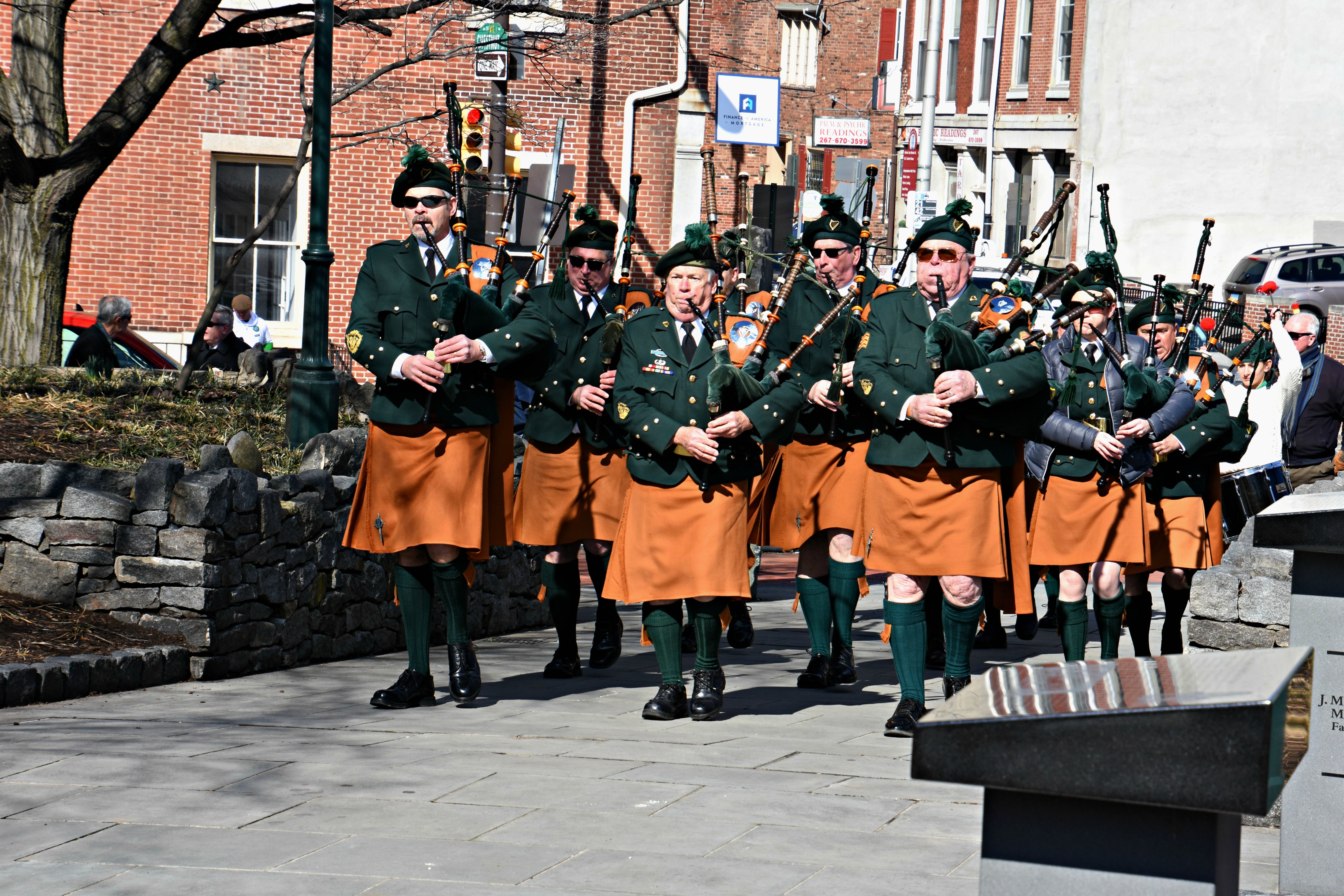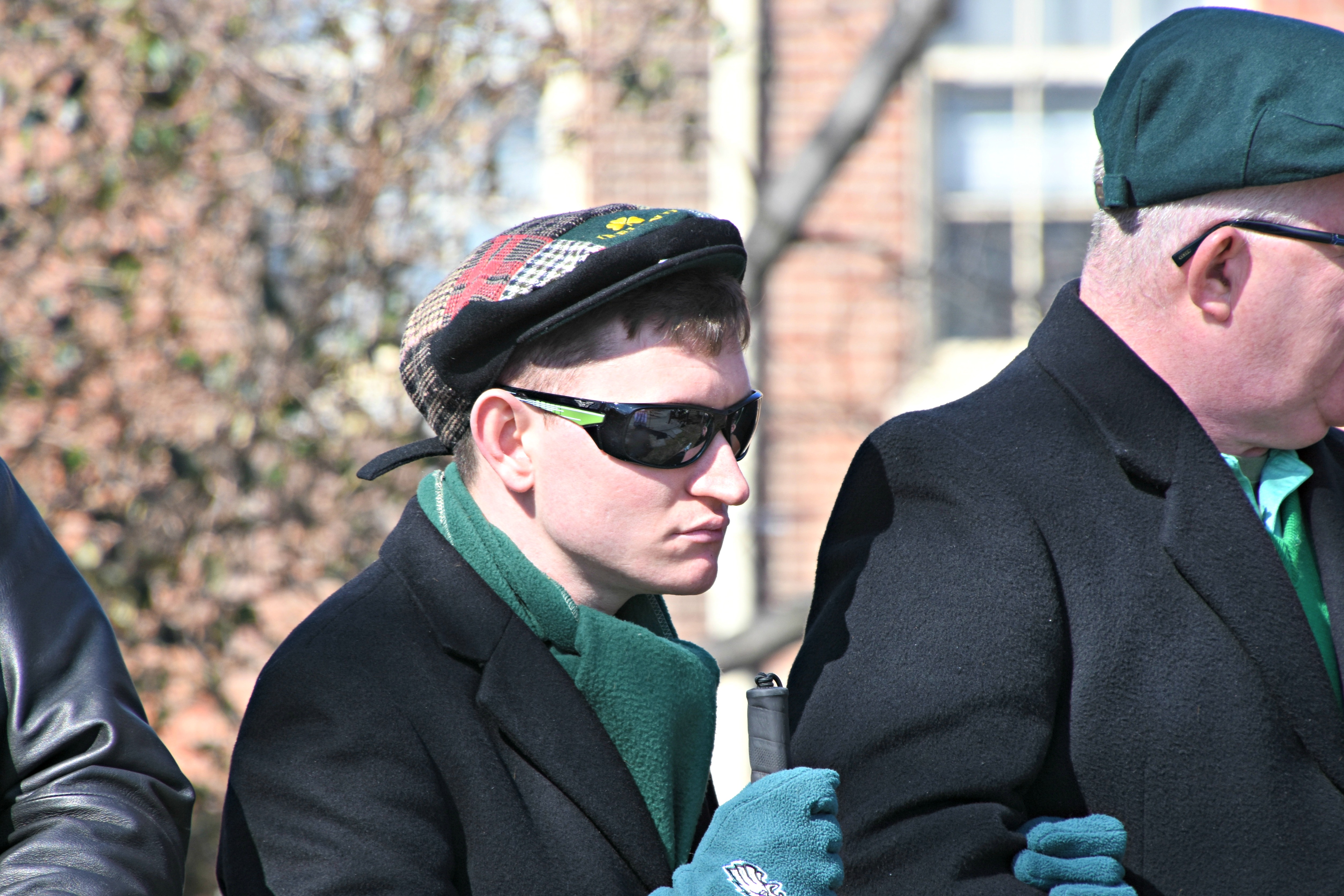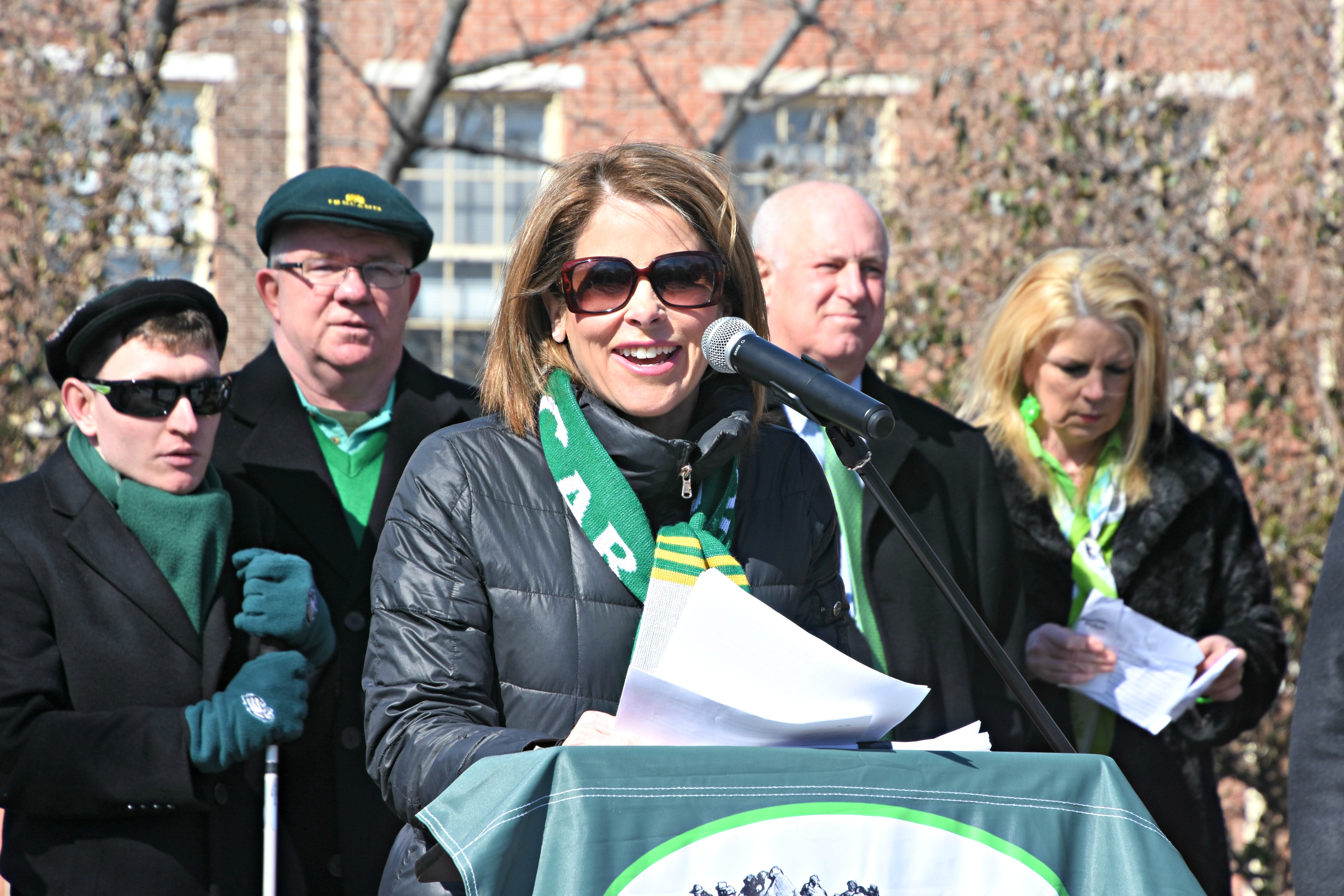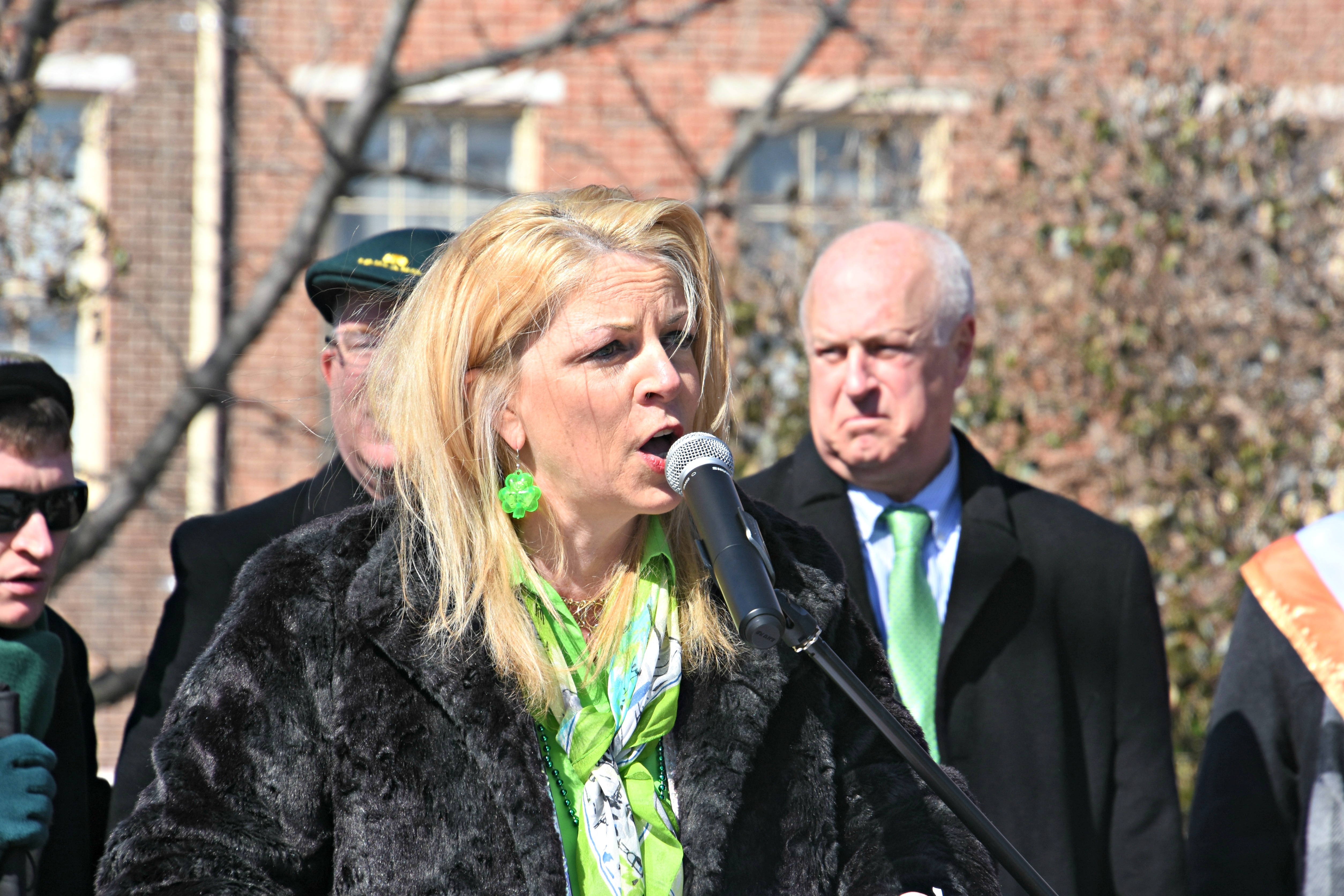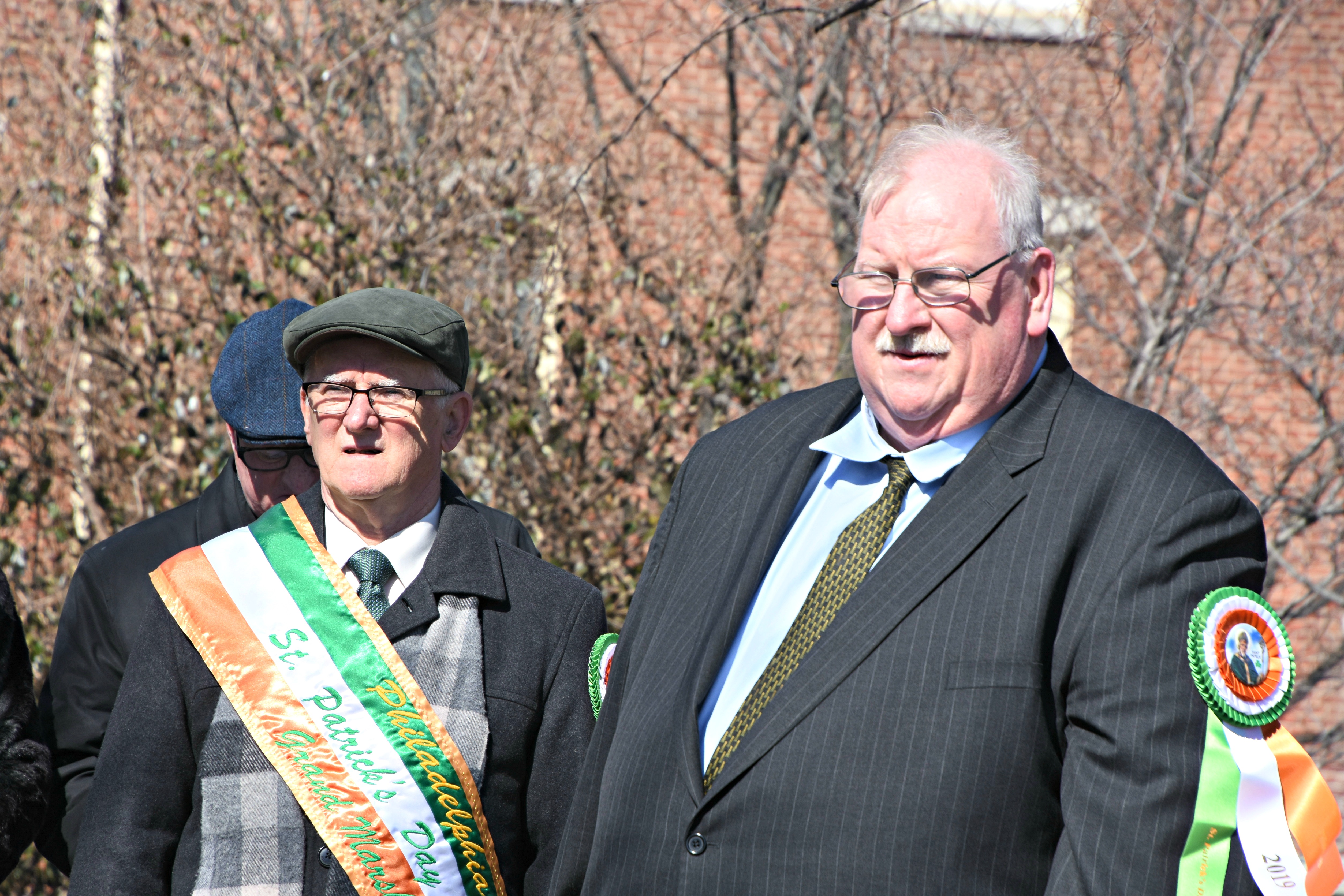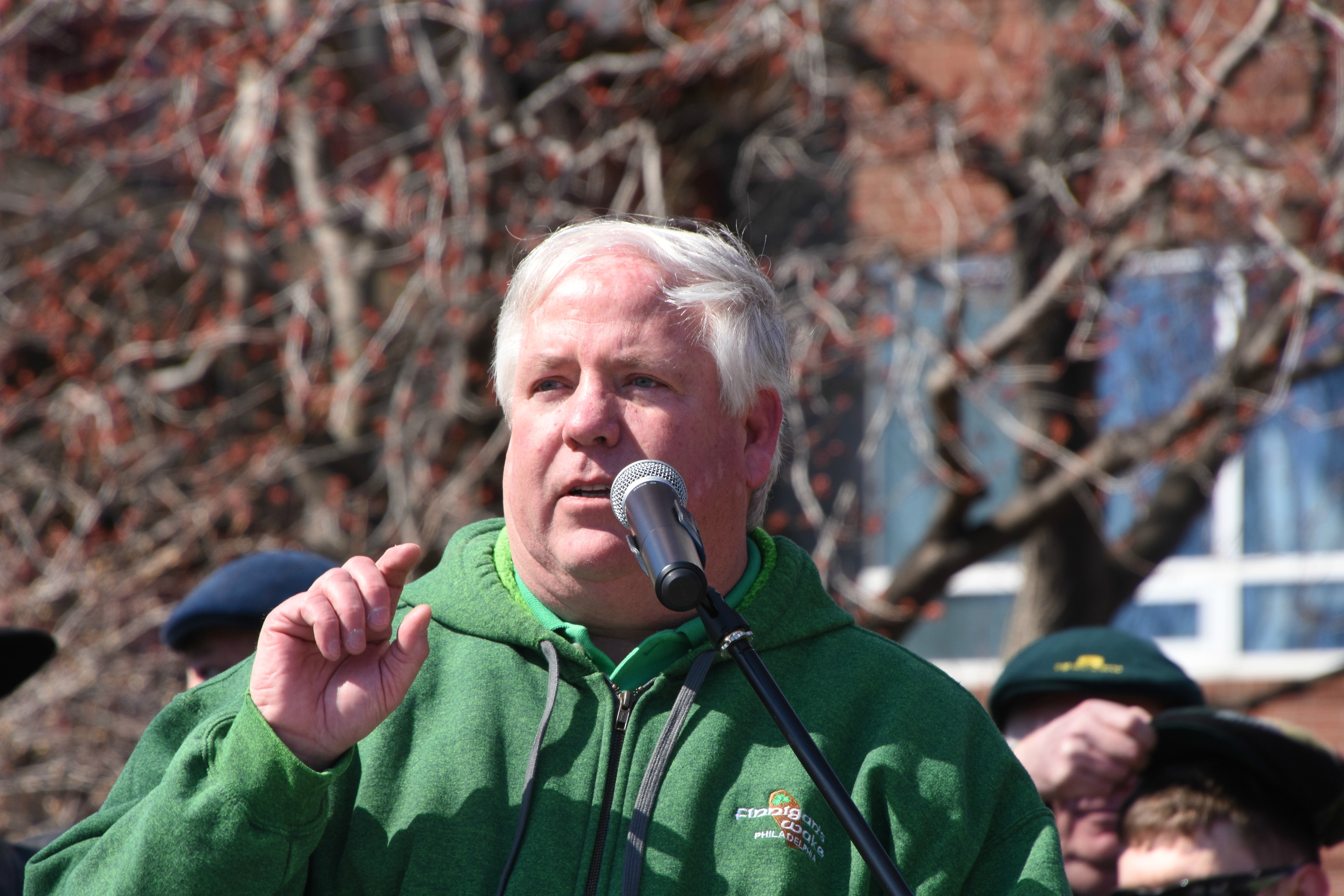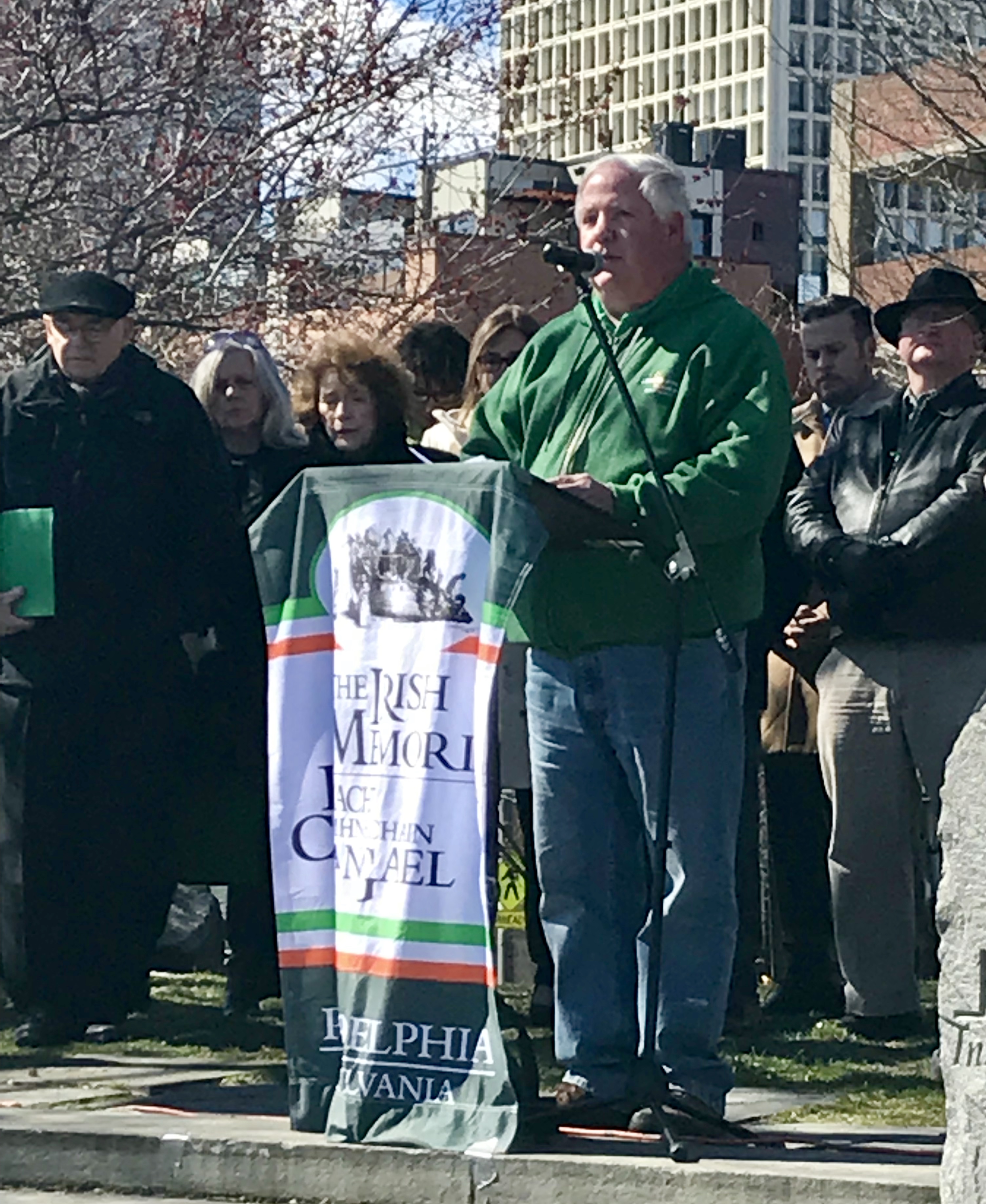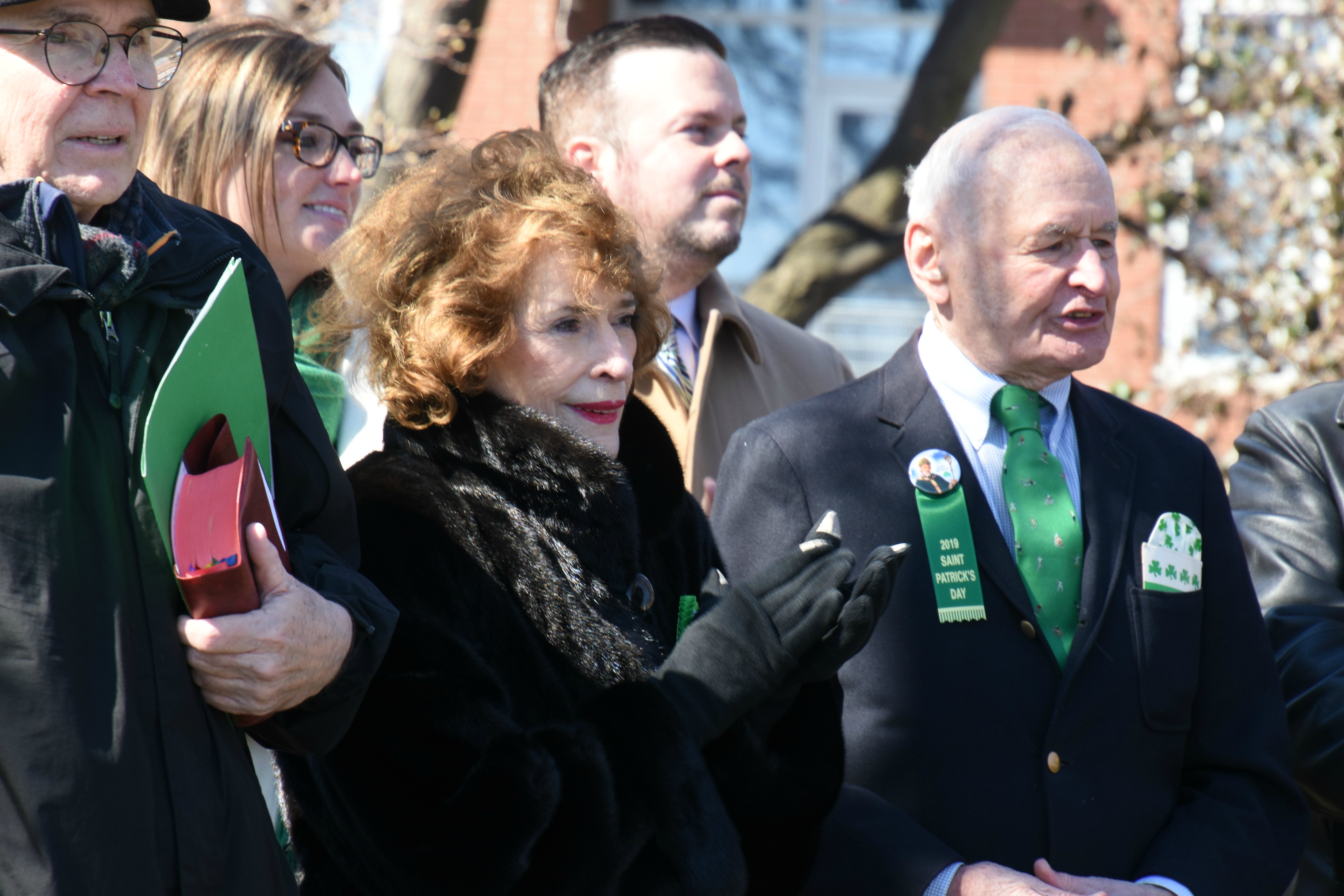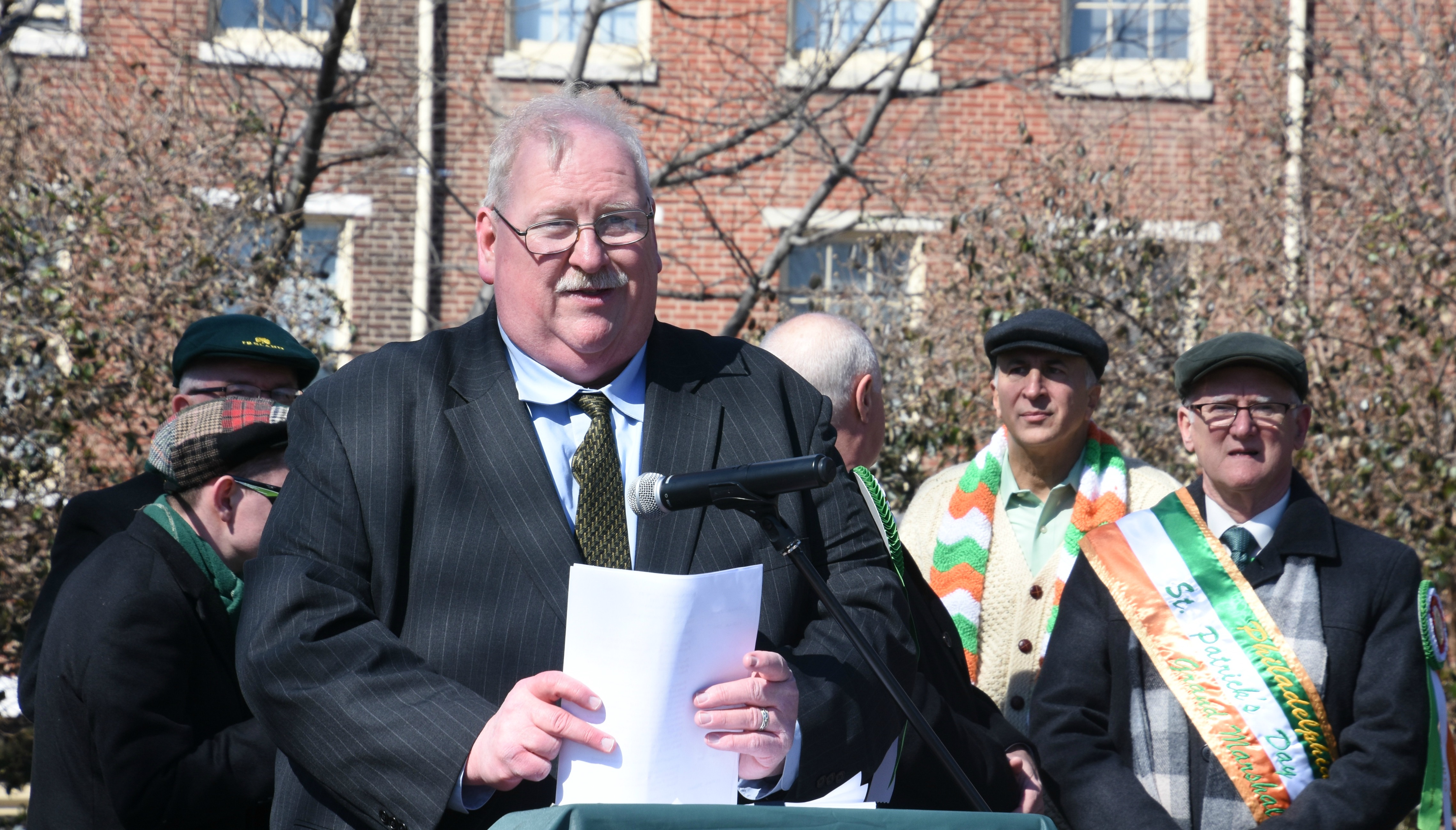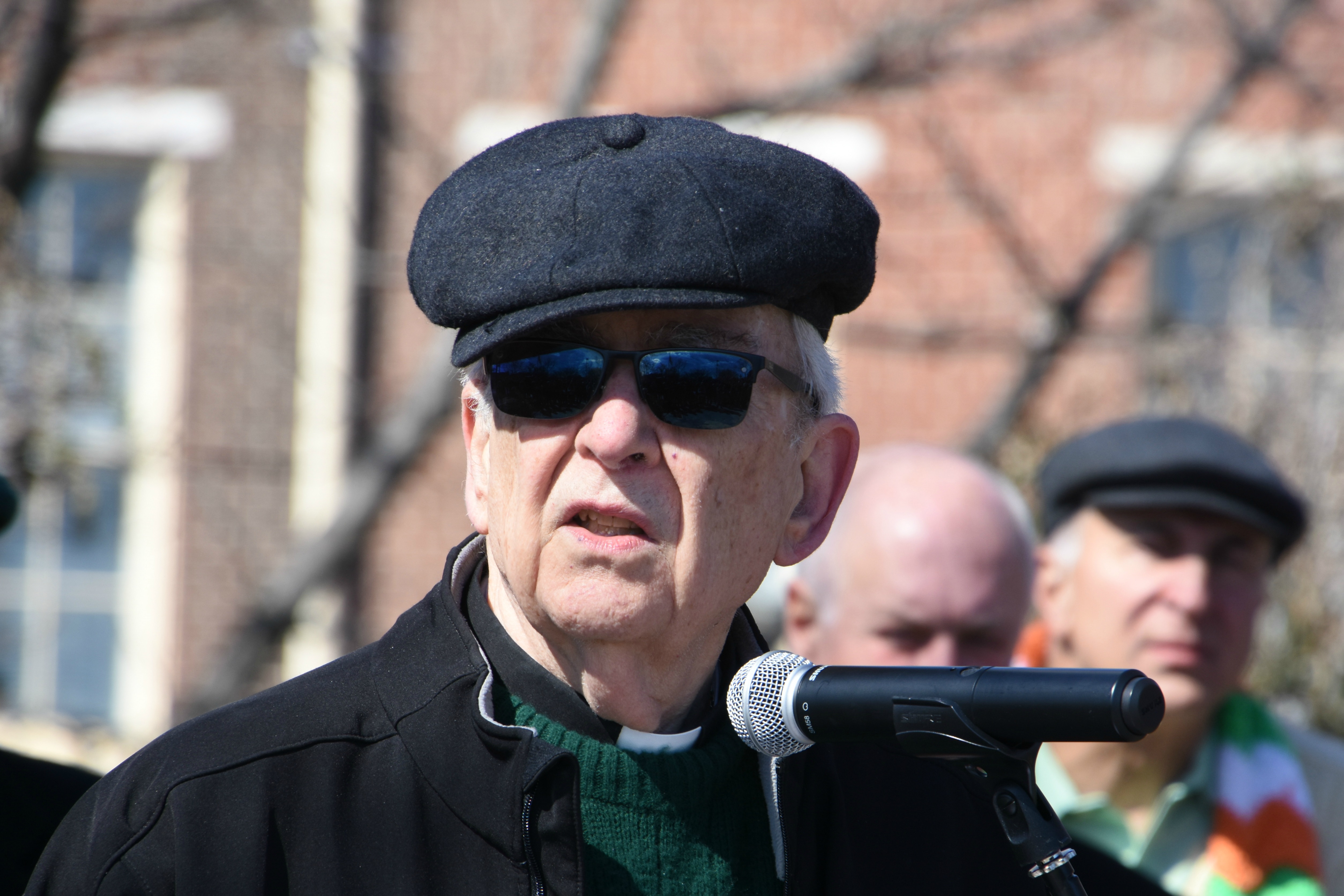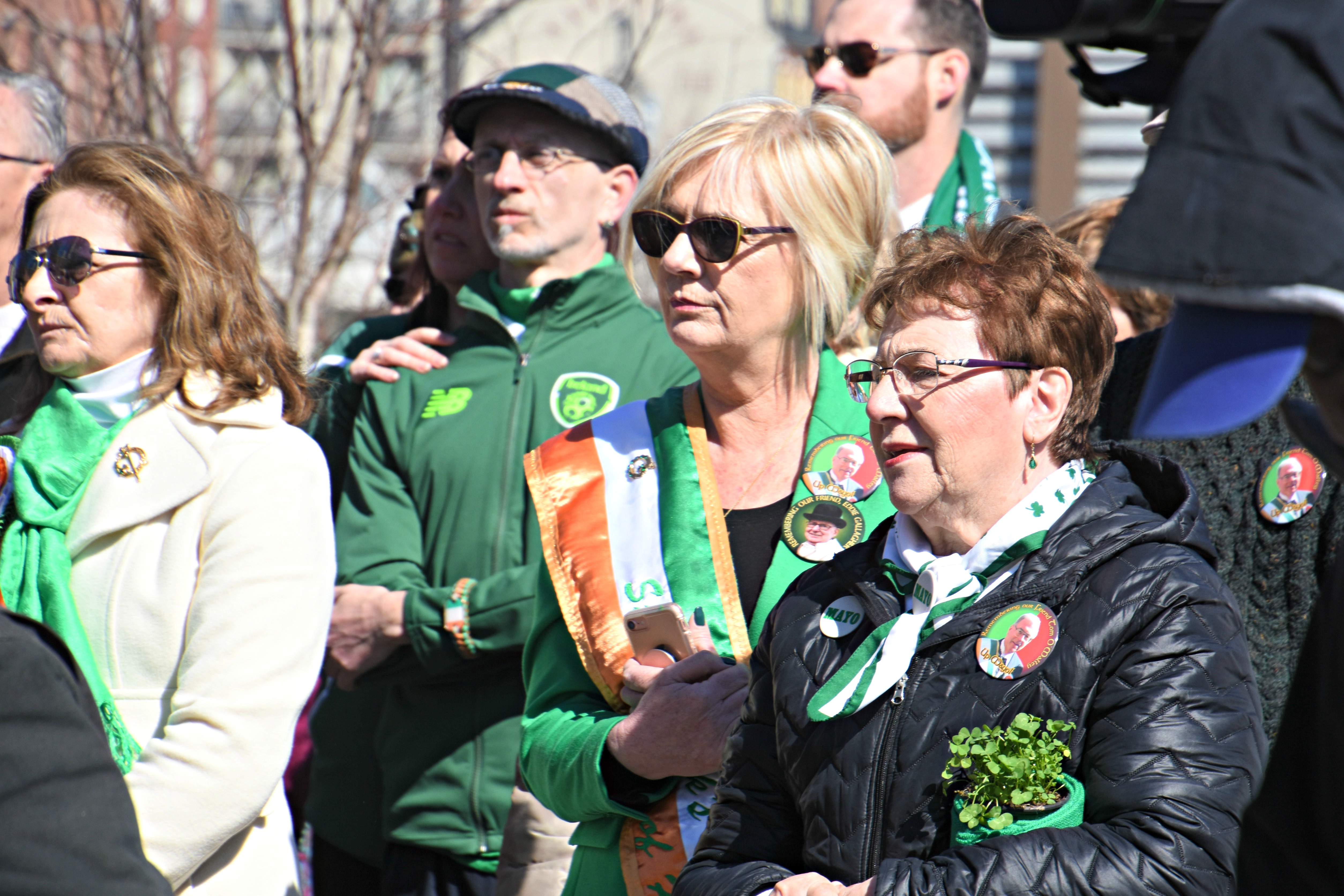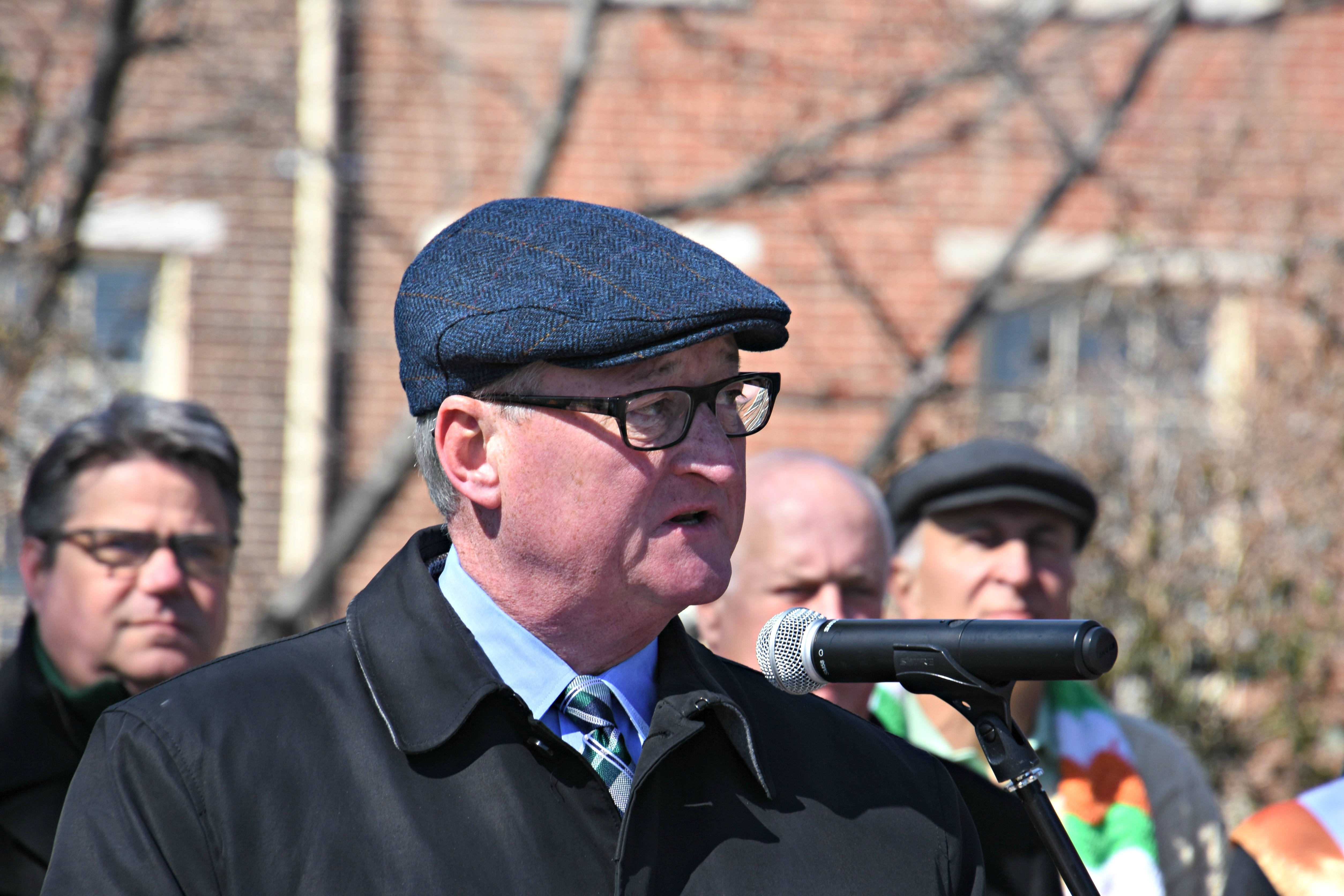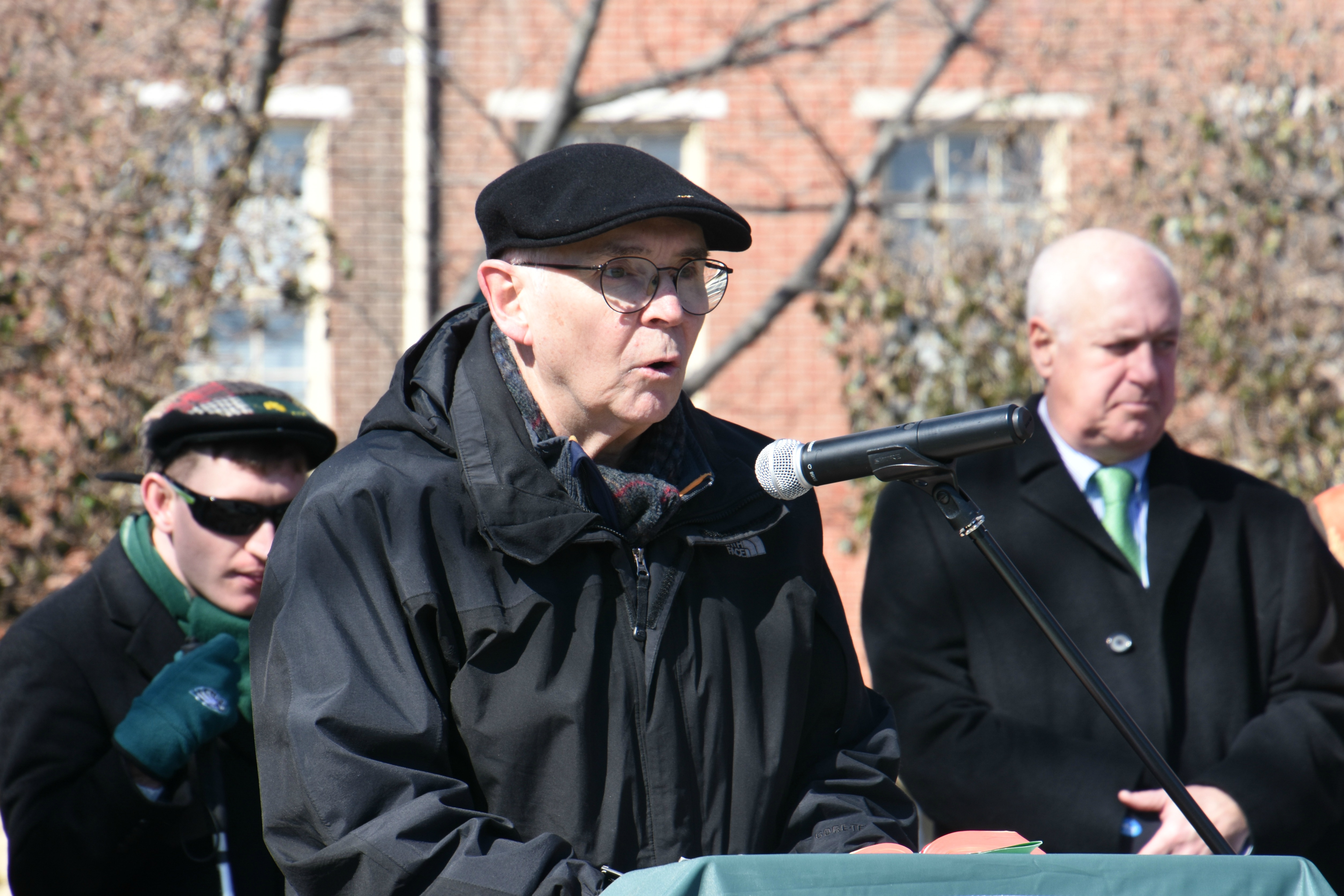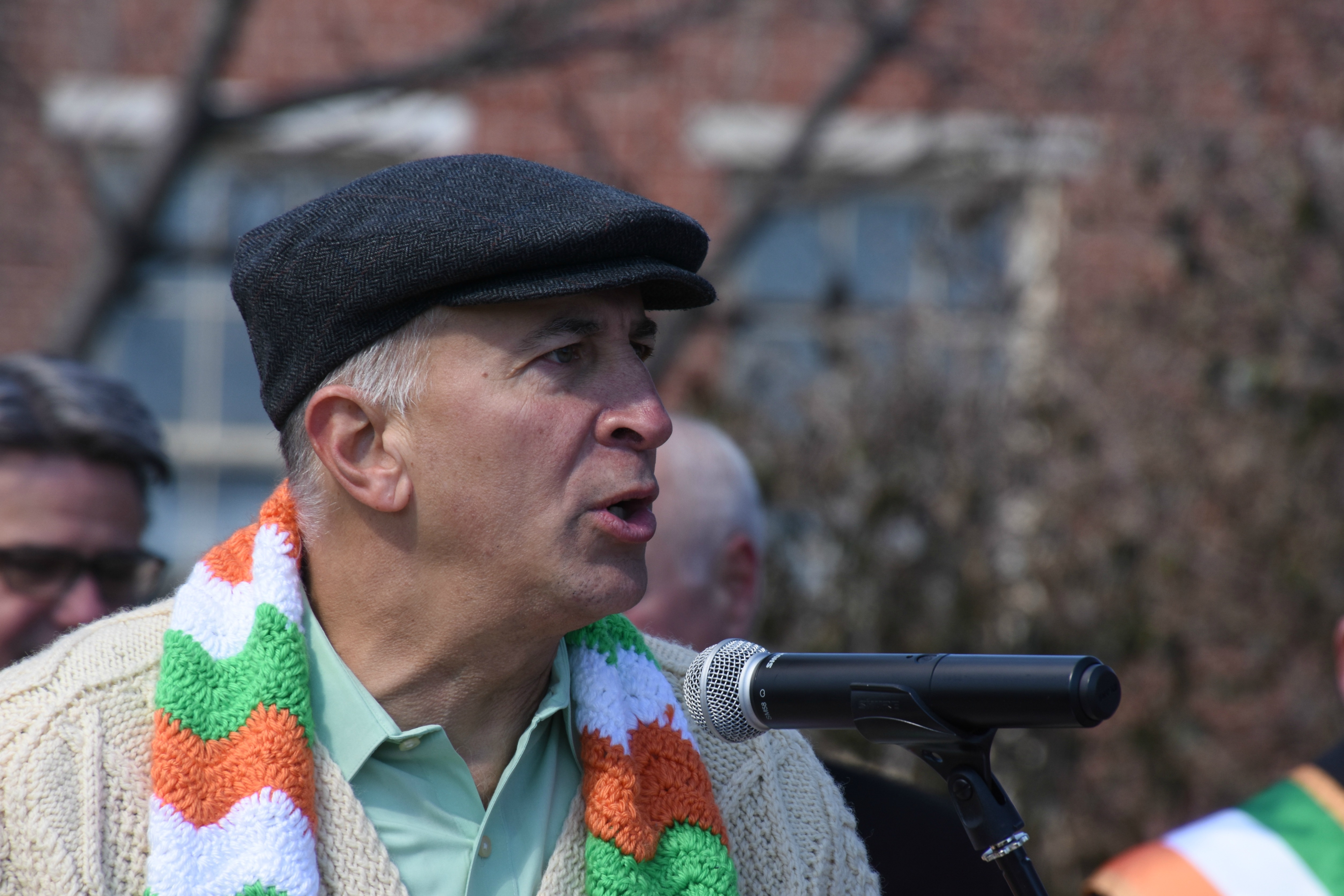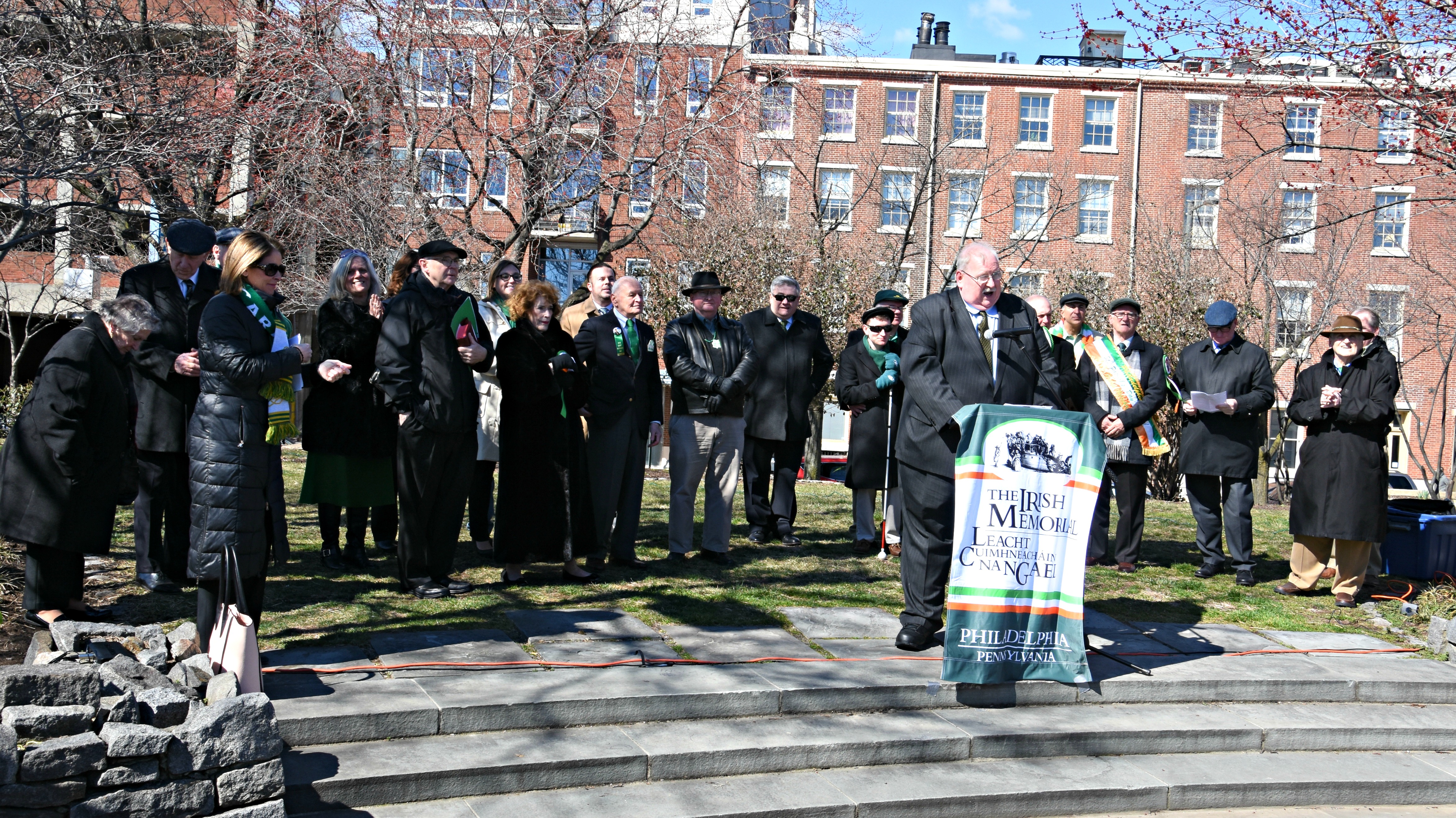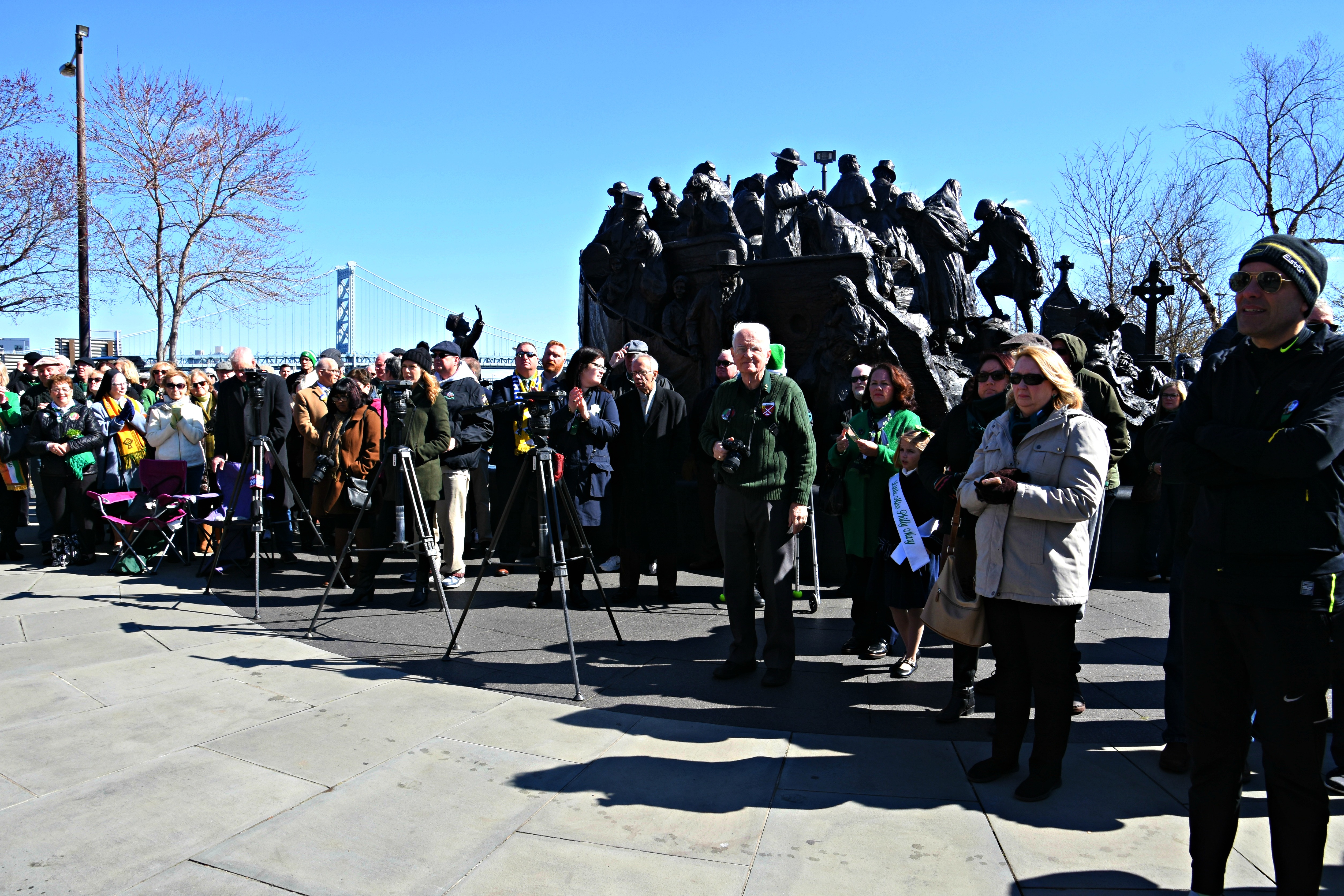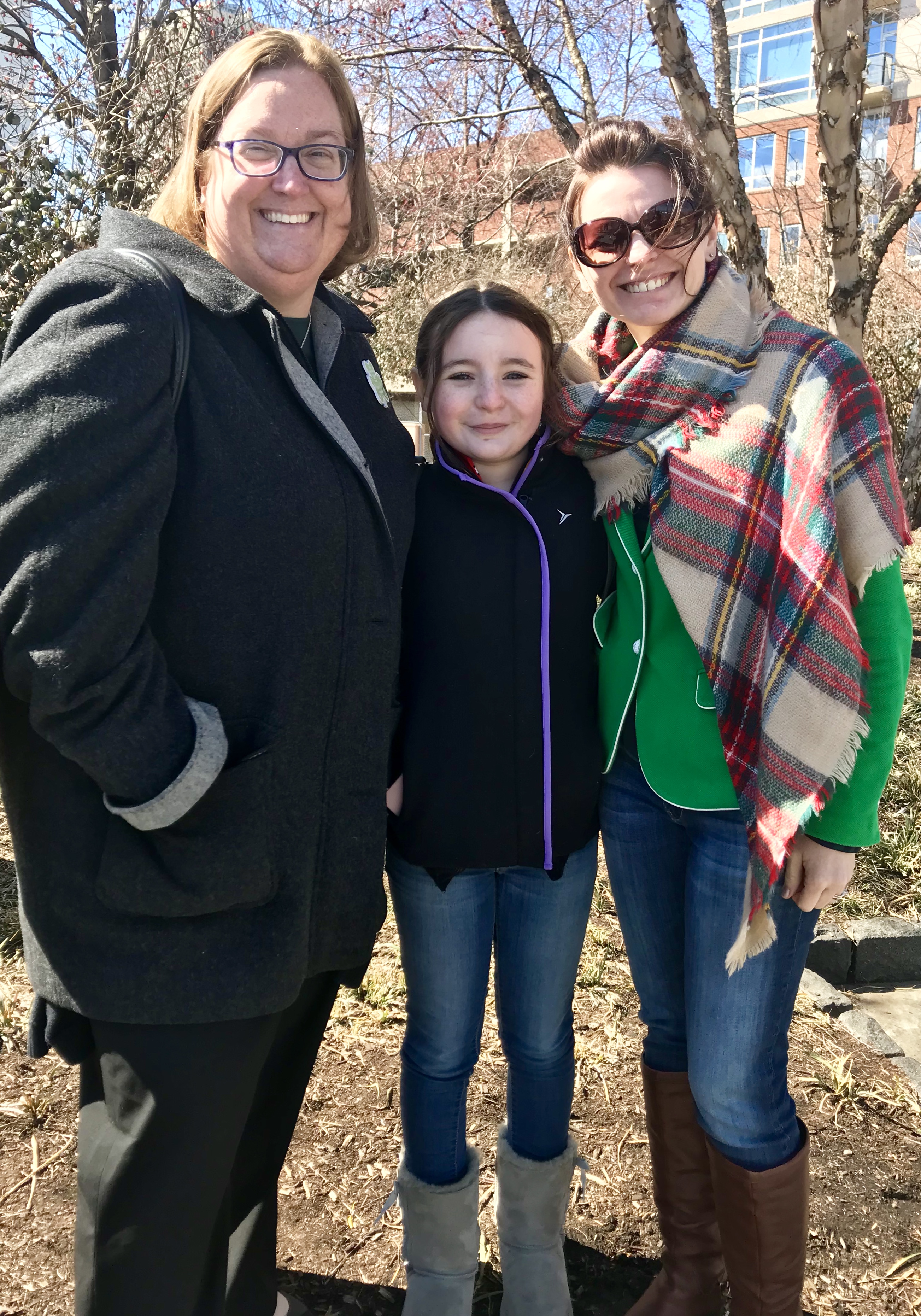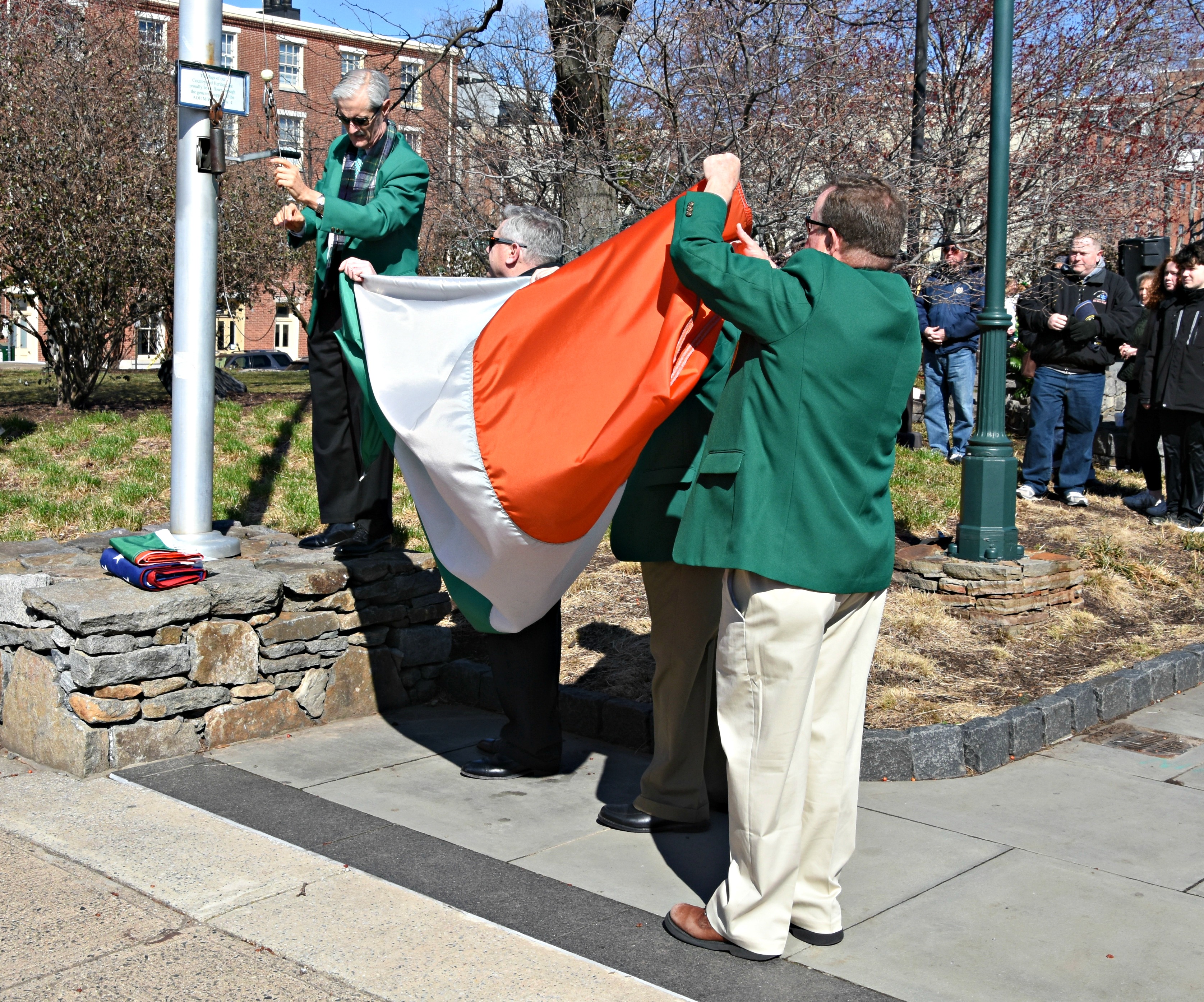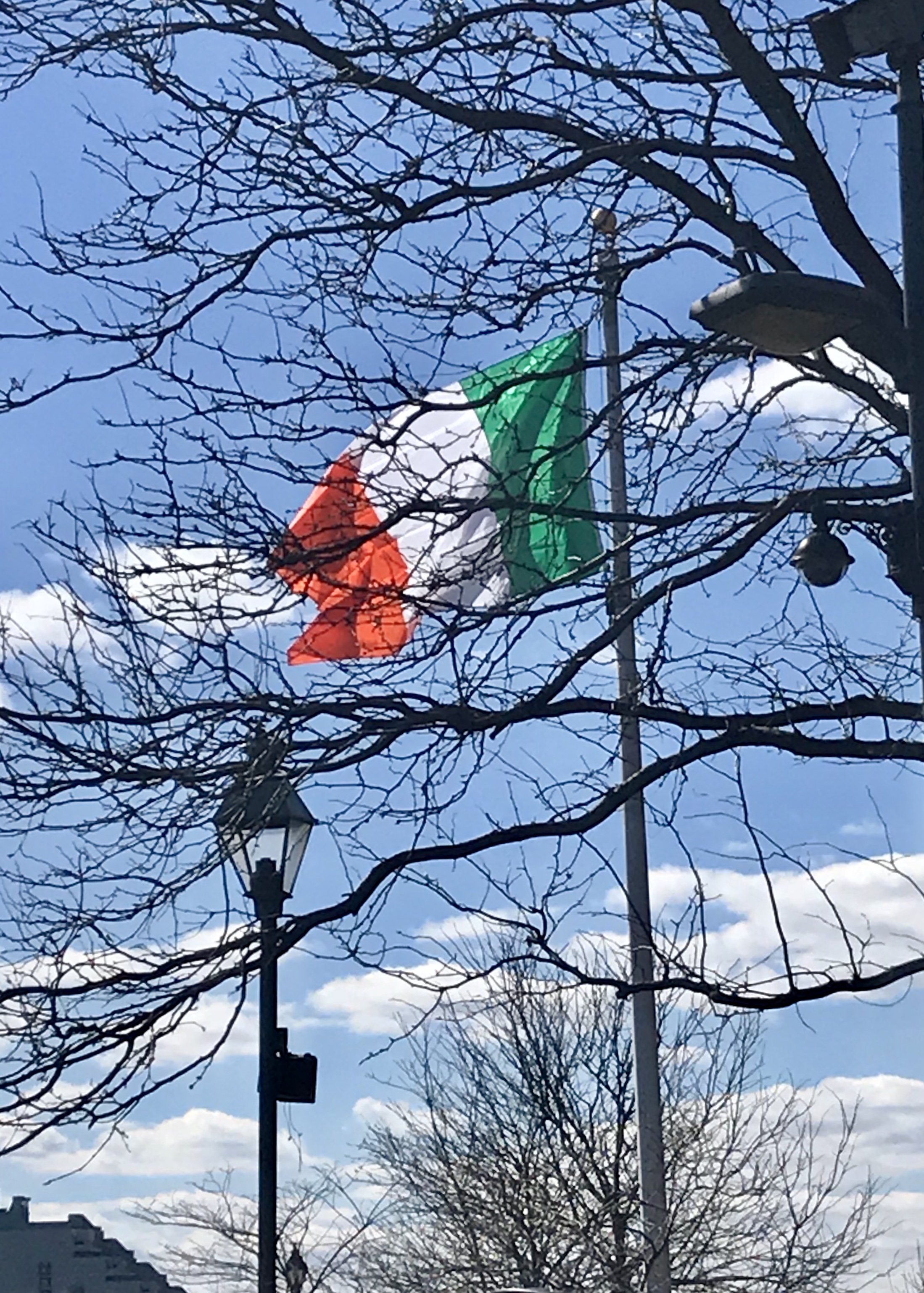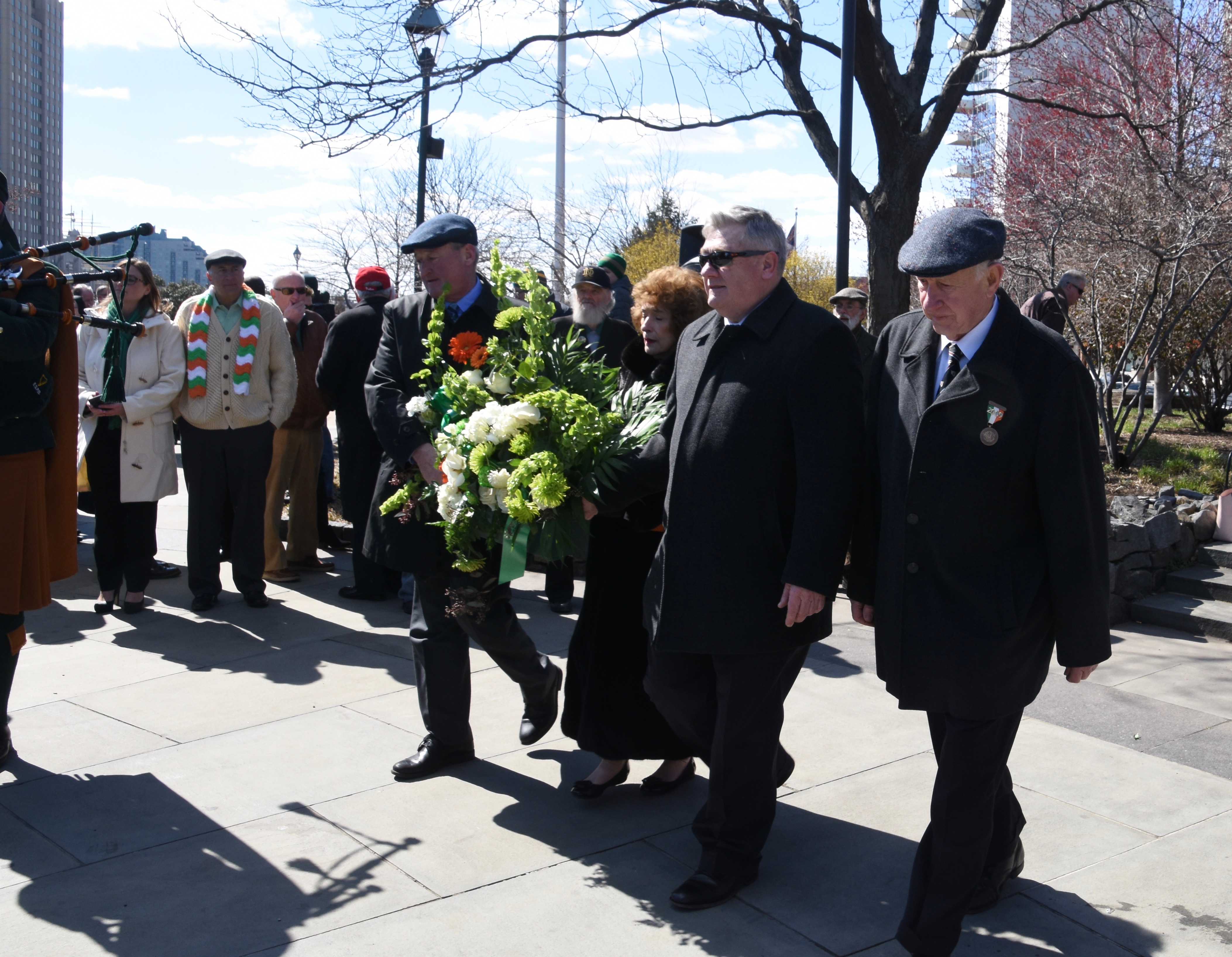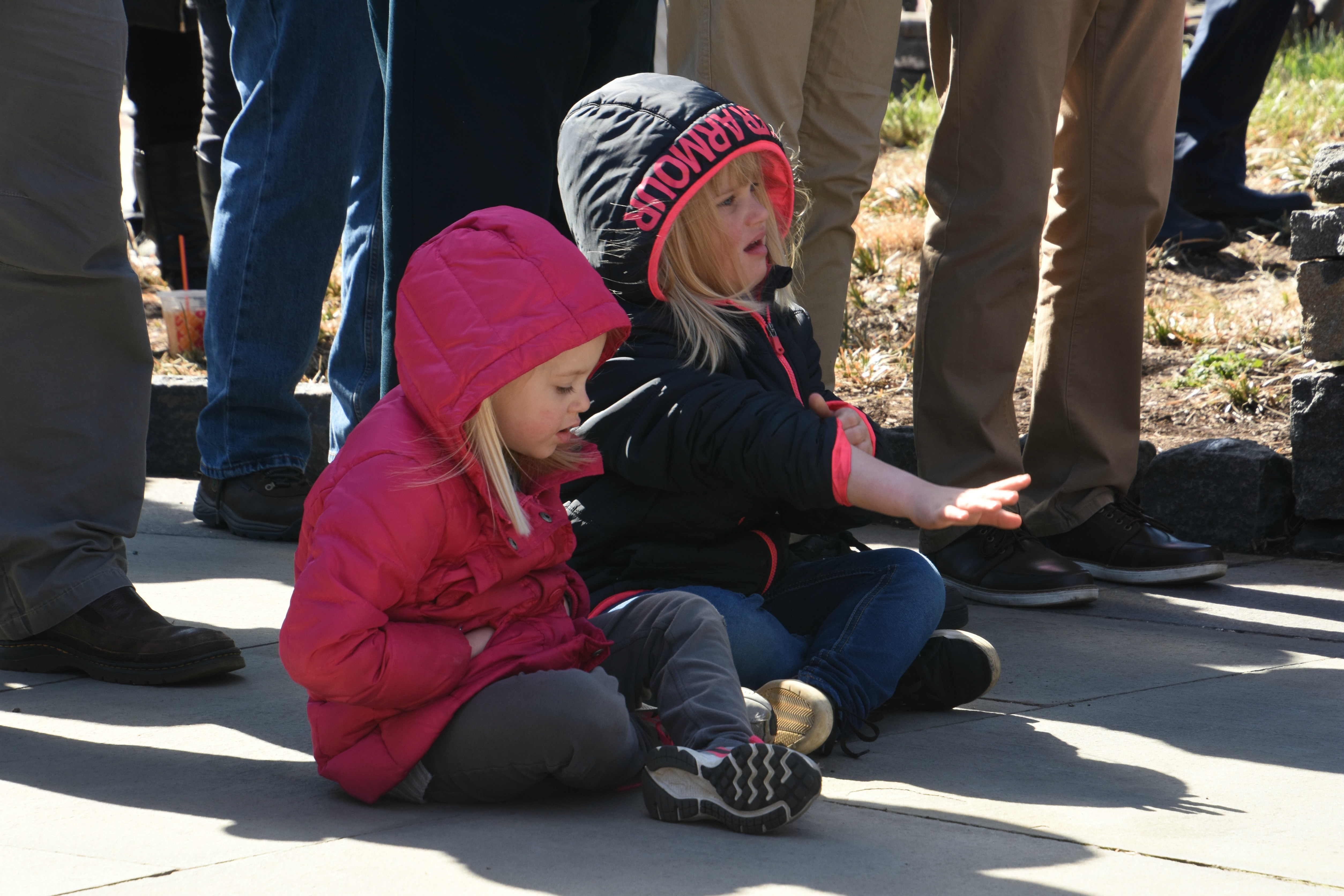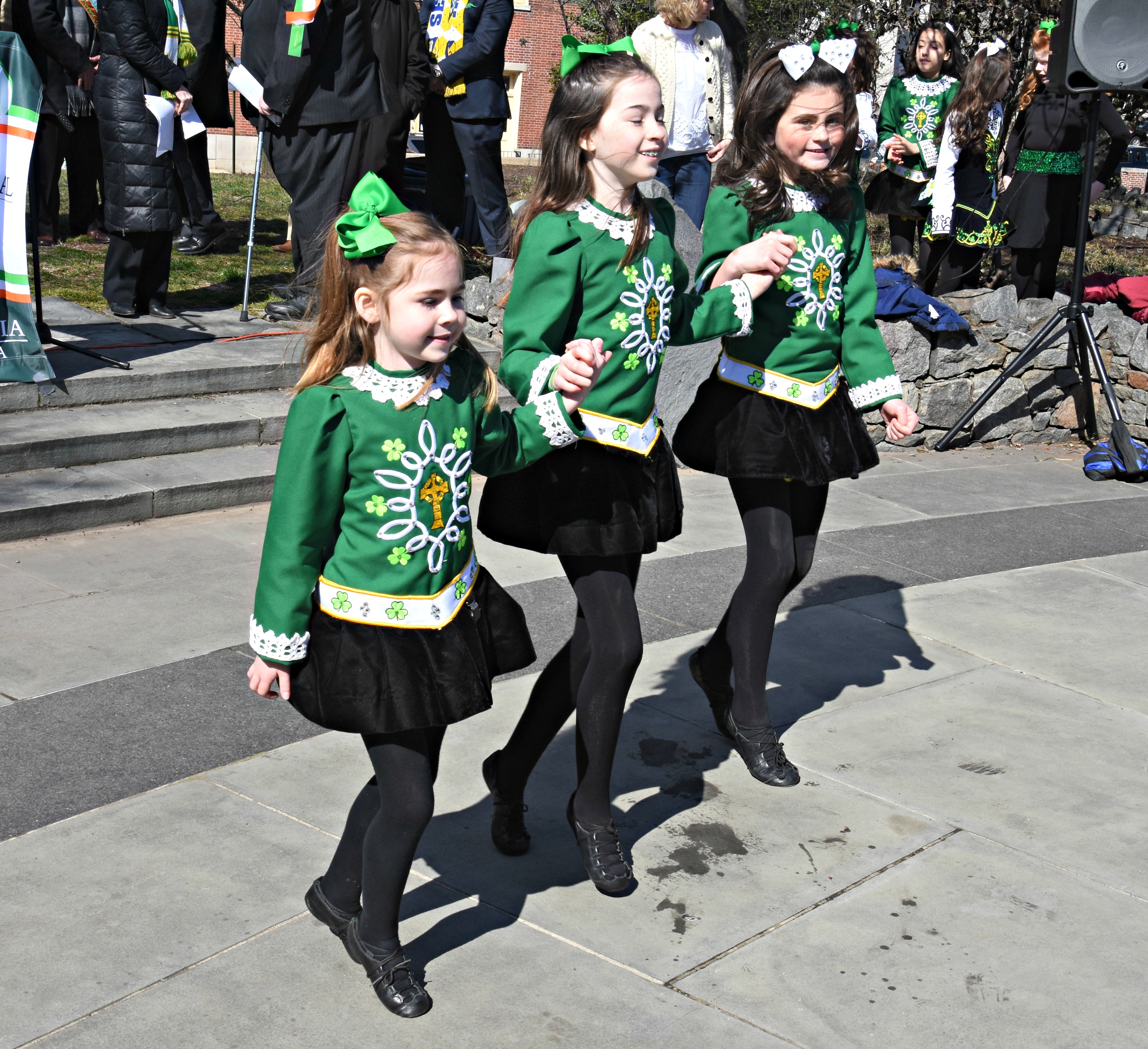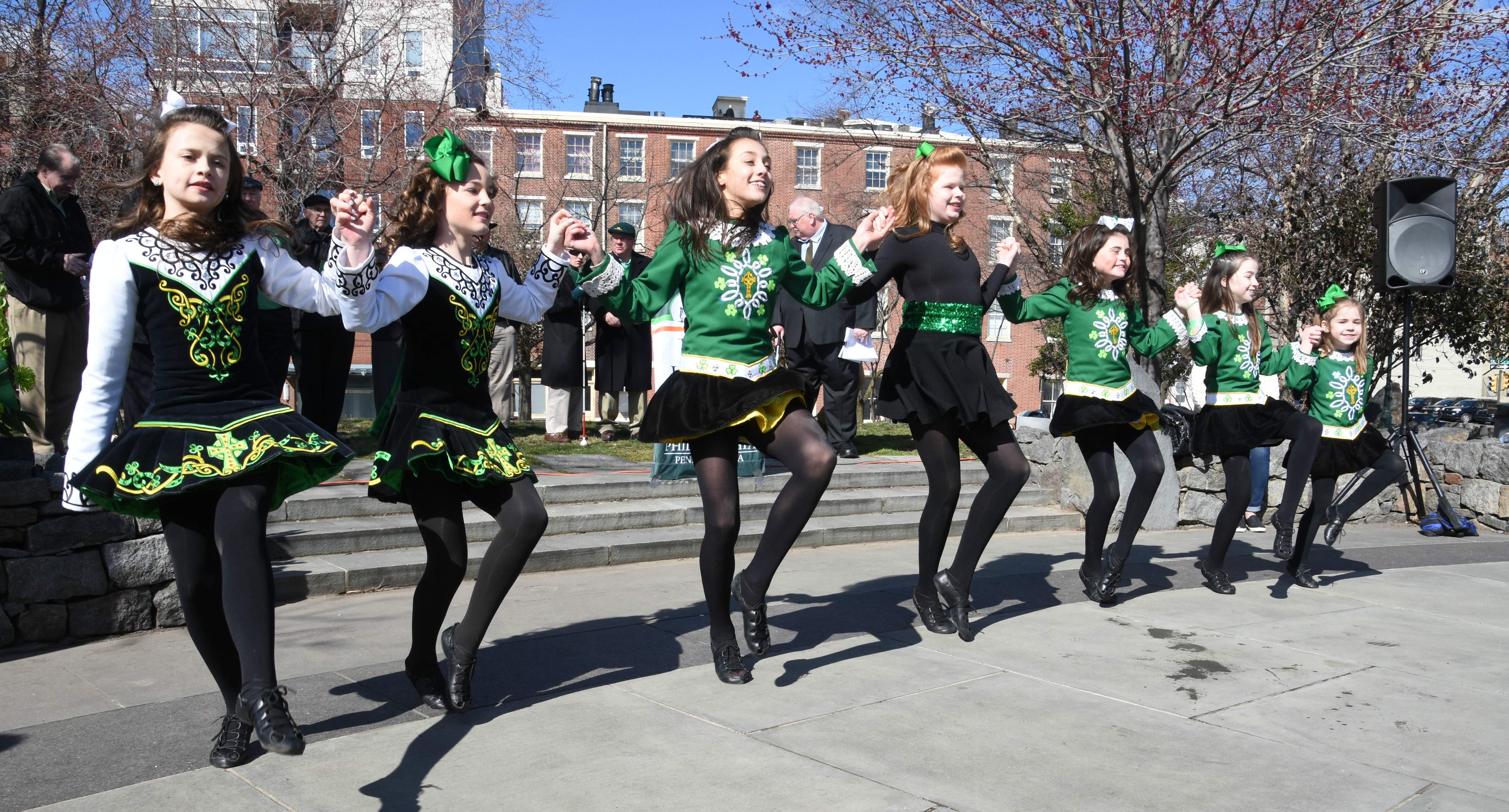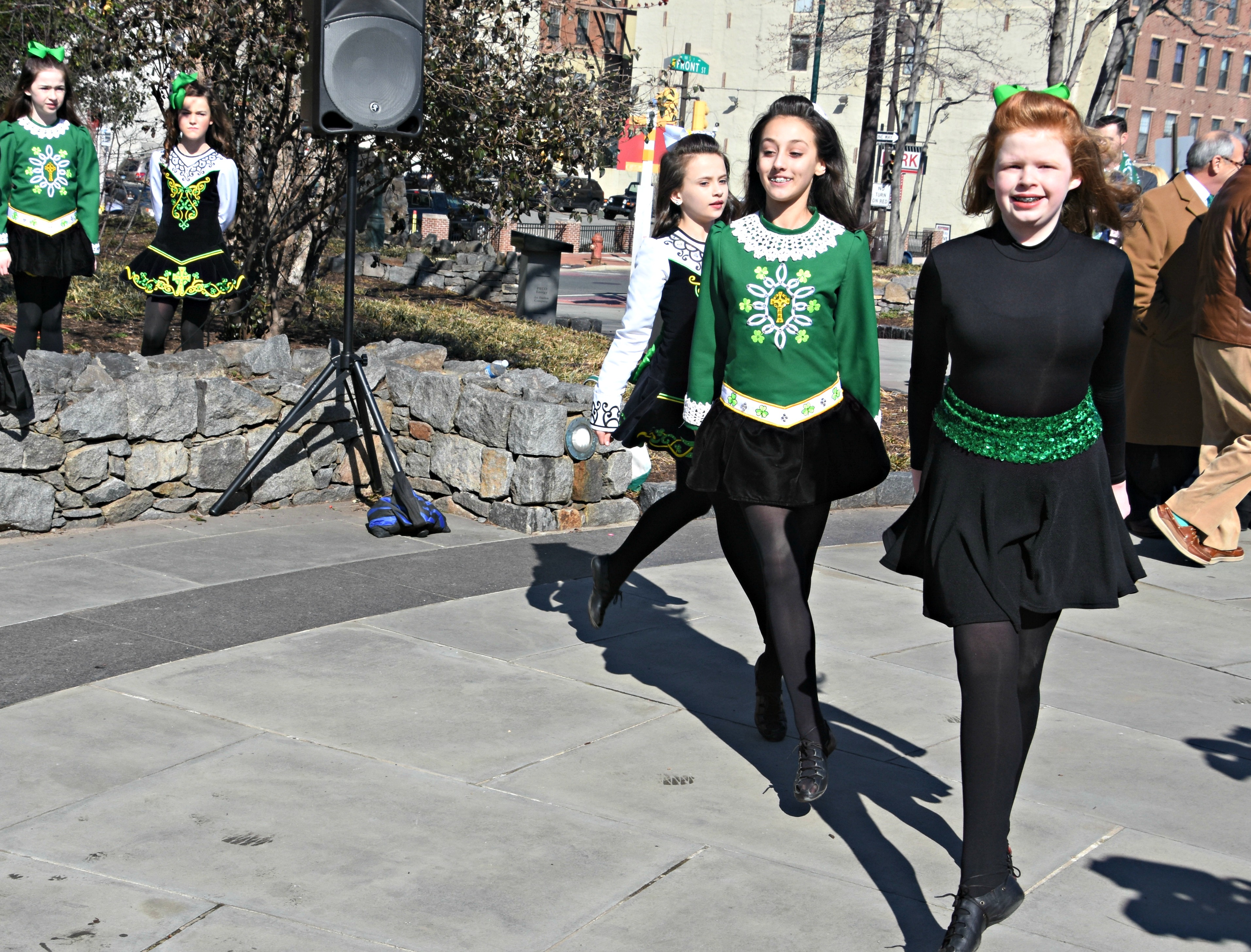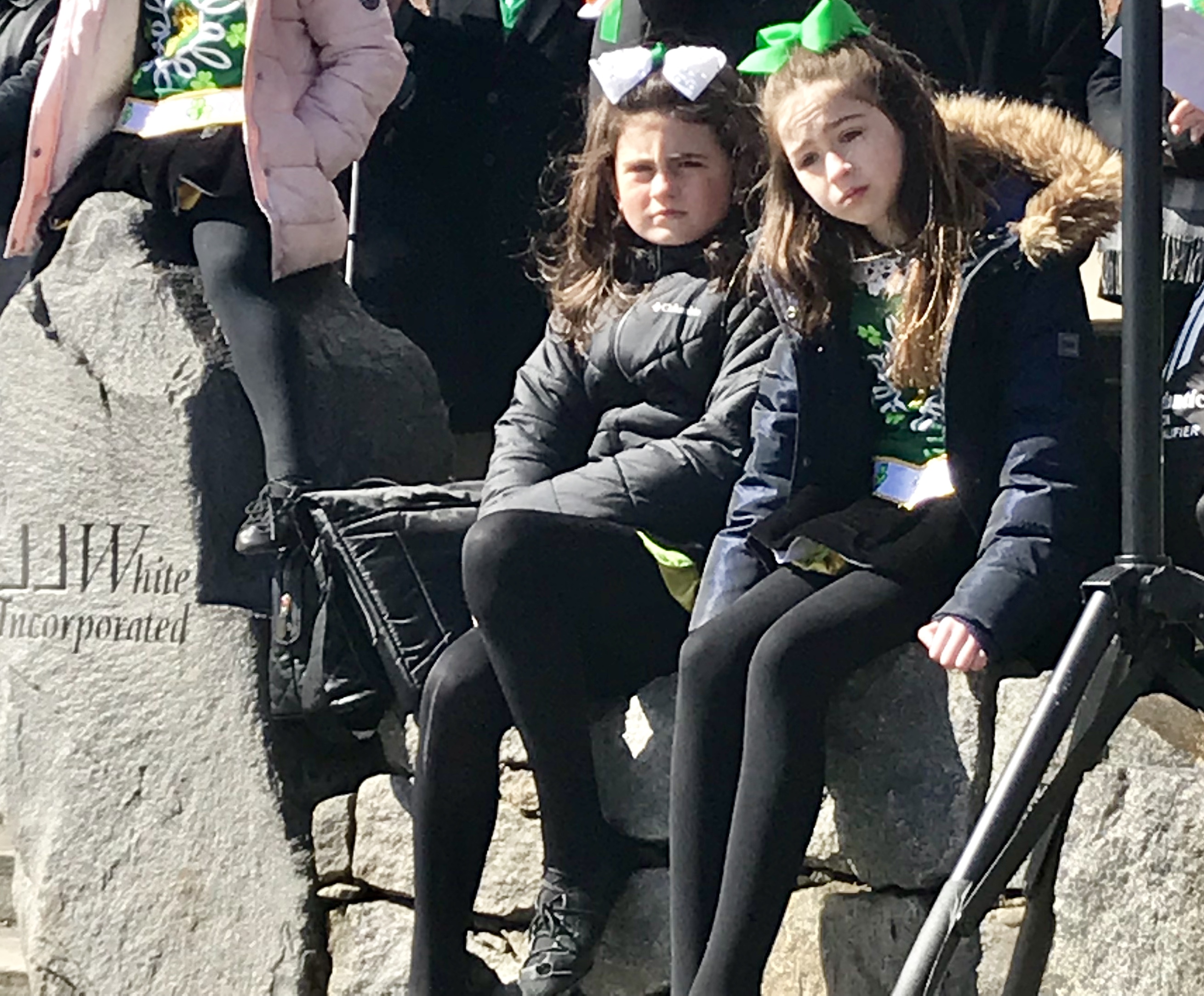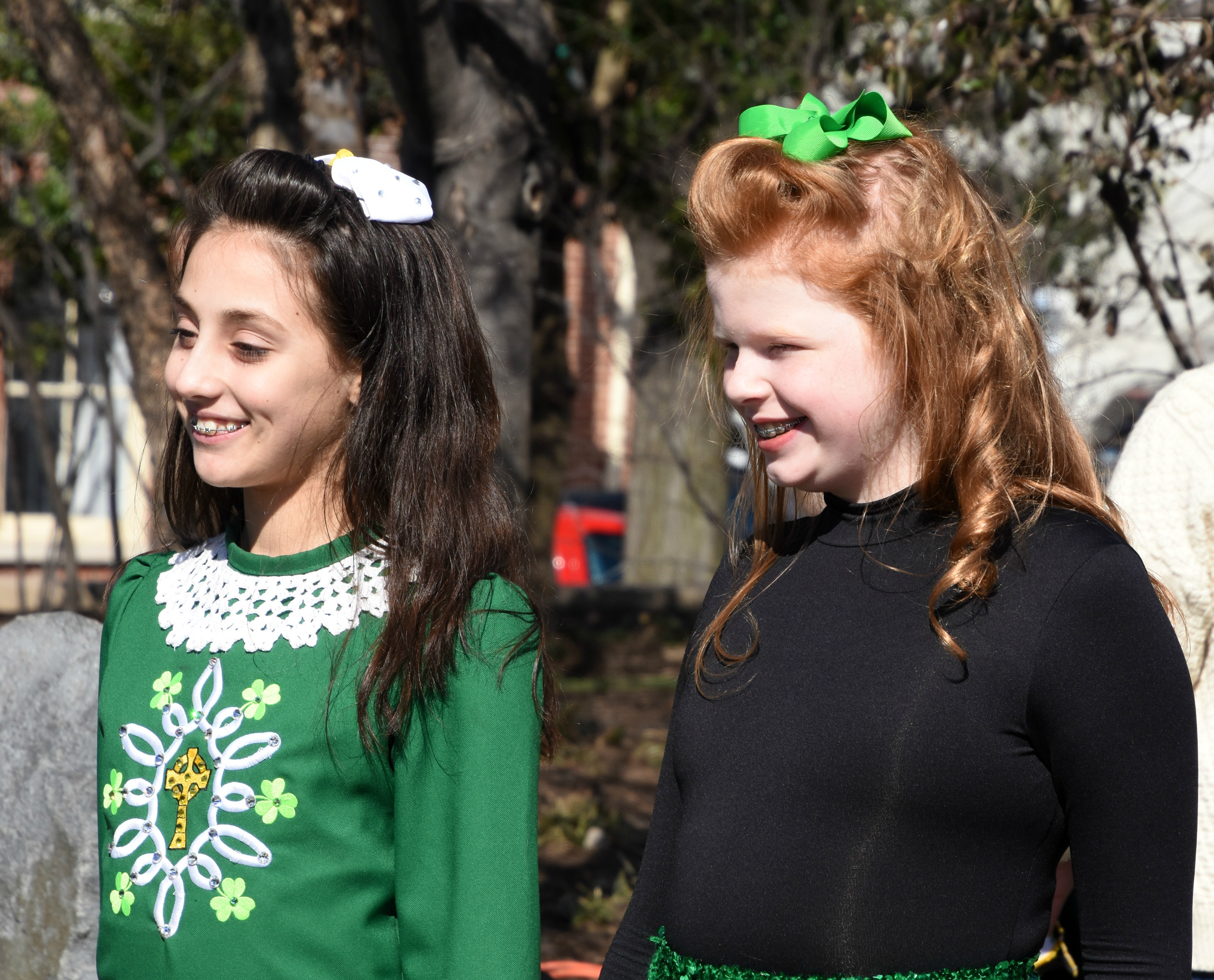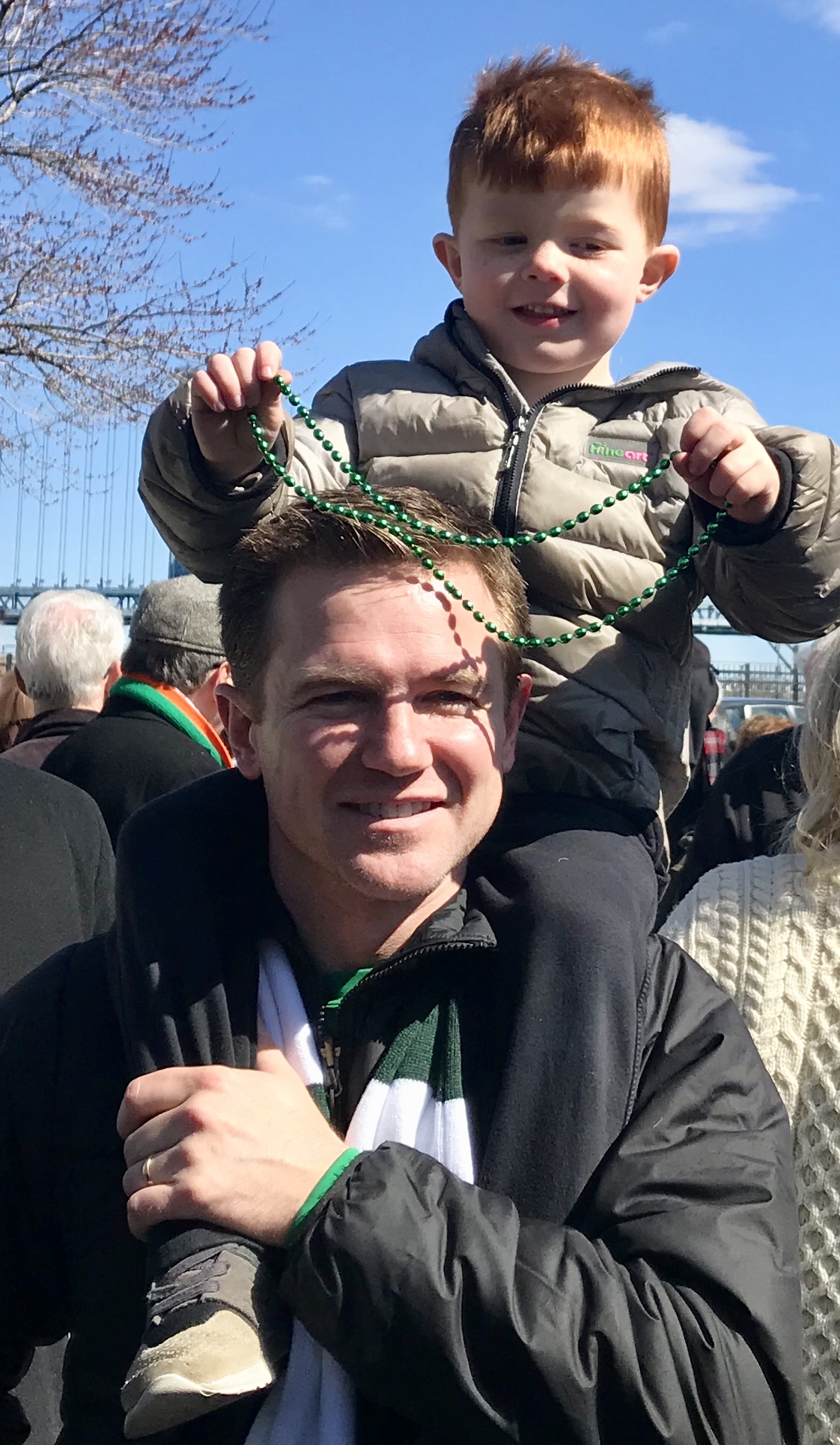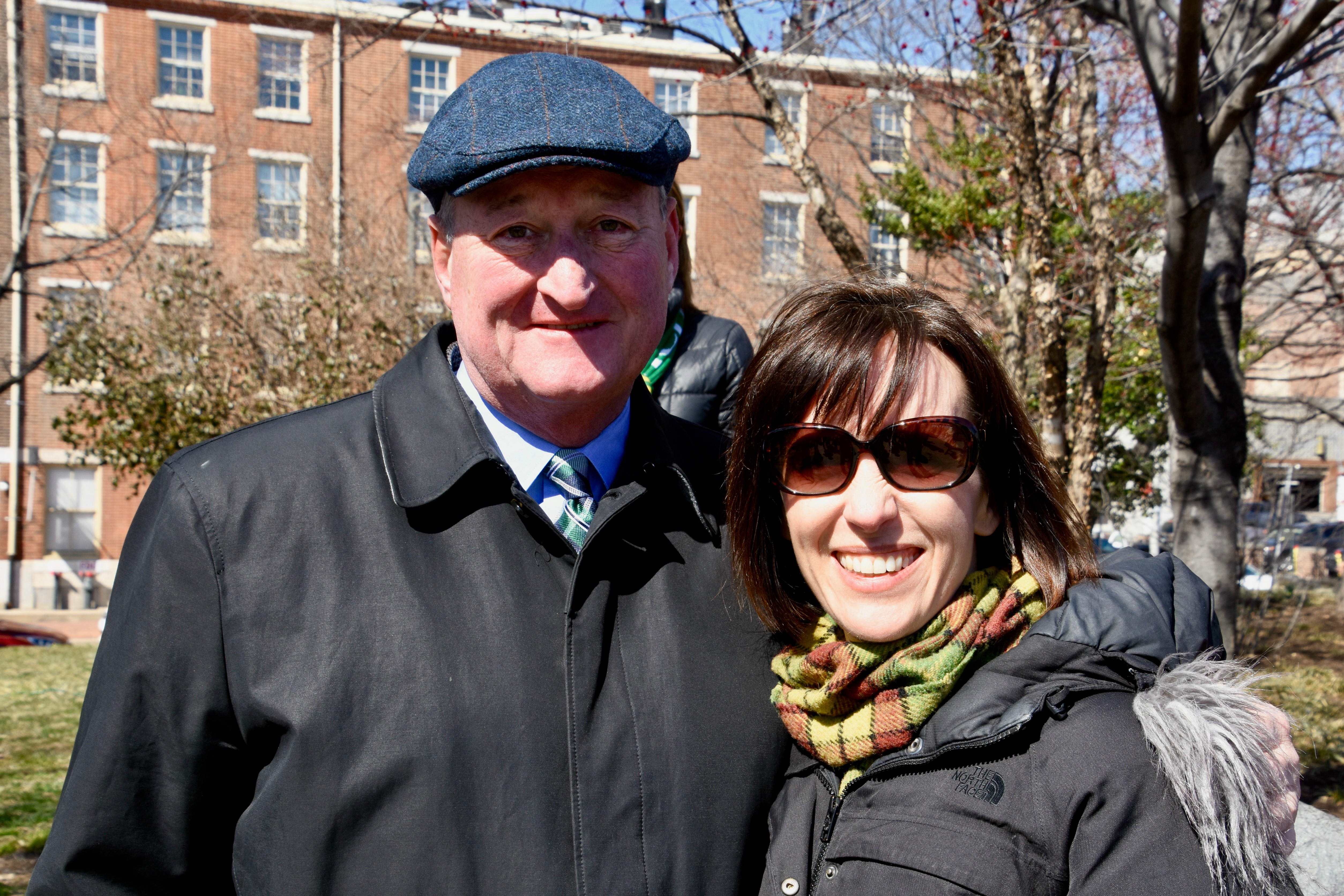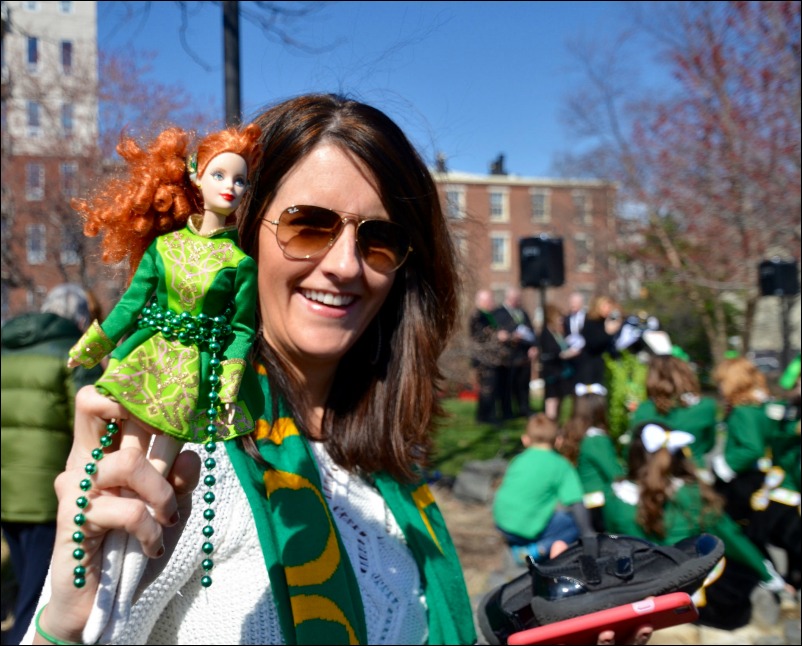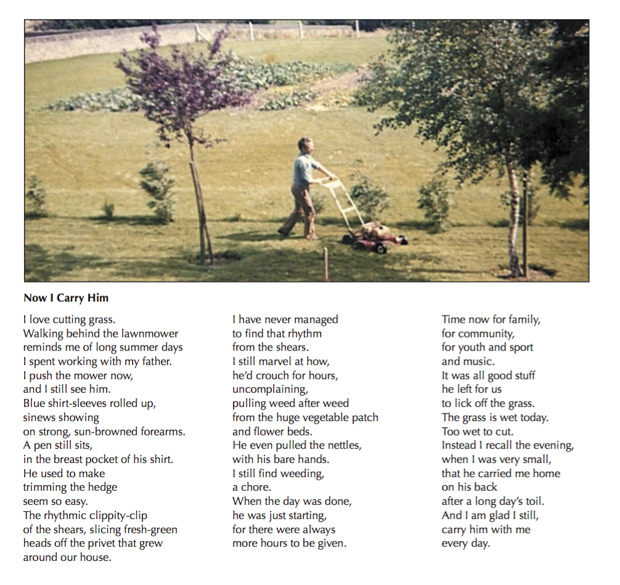They’ve come in rain, freezing rain and snow. Yesterday, on a chilly but sunny day, a large crowd of Irish and Irish-Americans joined together at Philadelphia’s iconic Irish Memorial for the annual commemoration of An Gorta Mór—the Great Hunger.
The centerpiece of the Memorial is the immense bronze statue created by sculptor Glenna Goodacre. Standing 12 feet high, 30 feet long and 12 feet wide, it occupies a place of honor on the nearly two-acre park at South Front Street and Chestnut Street in Philadelphia’s Old City. The Memorial dramatizes both the Great Hunger and the vast migration of the Irish to America’s shores during those hard times. It has stood on that spot since its dedication 16 years ago.
It’s expected that the Memorial ceremony will be held in the same place next year, but after that, its next—albeit temporary—location is uncertain.
The reason? The Delaware River Waterfront Corporation (DRWC) is spearheading a vast project to create a new park and civic space from Front Street on down to the river’s edge, between Walnut and Chestnut. The Irish Memorial—which, from planning to execution, took nearly 20 years and cost in excess of $4 million—needs to be relocated to a new space in the interim. It will be moved back when the project is complete.
The Memorial sits atop a concrete cap over I-95. The statue, along with the various architectural elements that surround it, will need to move to make way for the work, which includes a new landscaped pedestrian bridge, taking visitors over the interstate and Columbus Boulevard.
Some reports suggest the project will take three years to complete. Bob Gessler, president of the Memorial board of directors, says, “they indicated to us that it would be two years, but we take that with an extreme grain of salt, given the engineering challenges. We’re realists. Two years might turn into four years.”
So the question remains, where will the monument wind up?
Right now, there’s no precise answer. The Memorial board is working with city and other authorities to determine an appropriate site—appropriate being the key word.
“It can’t go into storage,” Gessler says. “It has to be accessible and people need to be able to interact with it. We don’t want to put it in the middle of a field somewhere. We need to get this thing going so we can know where it’s going so it can be dismantled and reassembled.”
Additionally, the architectural elements currently surrounding the statue might need to be placed in storage. The Memorial board wants to be sure they don’t wind up in a city warehouse. “We want to control that.”
Most of the associated costs of the move have been promised to the Memorial board, Gessler says. Nonetheless, additional fund-raising may be required for storage of various elements and related expenses.
When it’s time to move back, more fund-raising may be required to enhance the visitor experience, Gessler says.
All of that uncertainty was set aside yesterday, St. Patrick’s Day 2019, as the sacrifice of our Irish immigrant ancestors was recalled in prayer, speeches, dancing, singing, the raising of flags, the planting of shamrocks, and the skirl of bagpipes.
We were there. Check out our photos, above.

